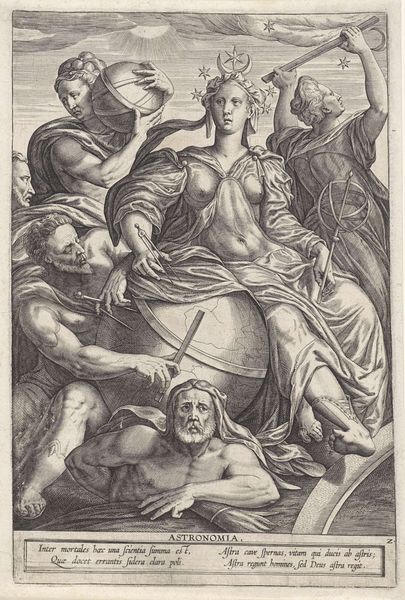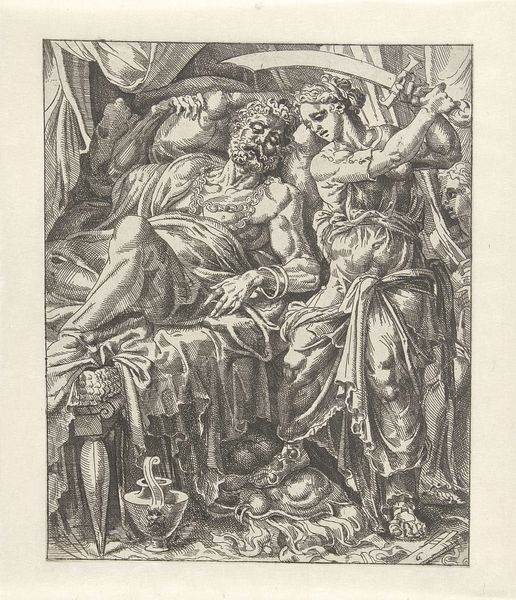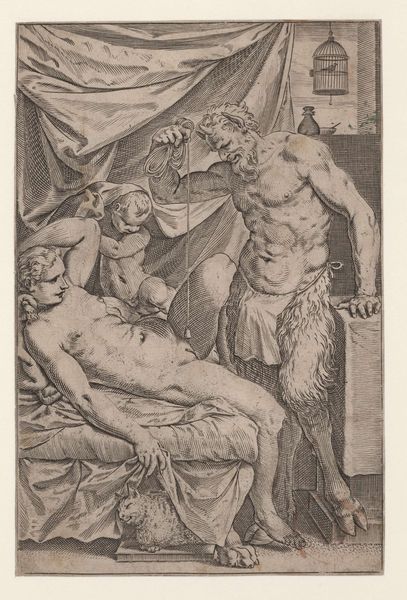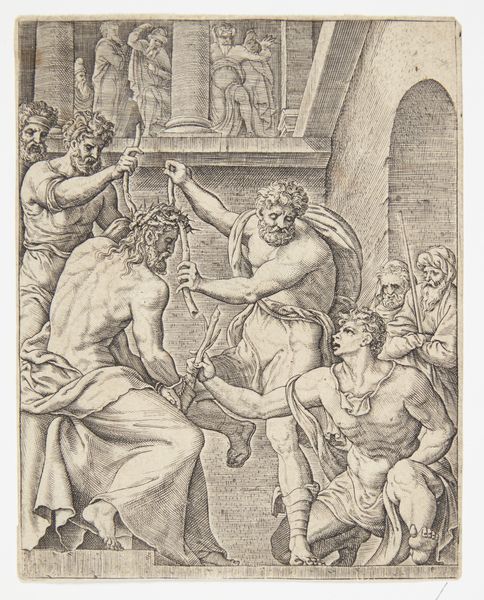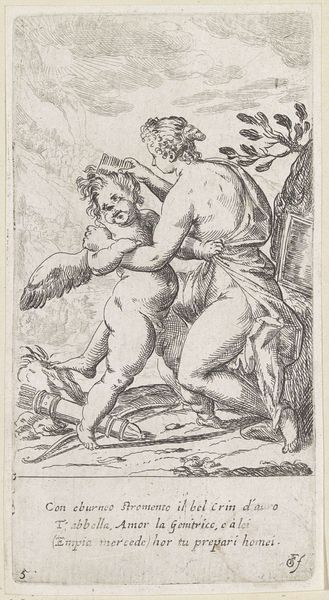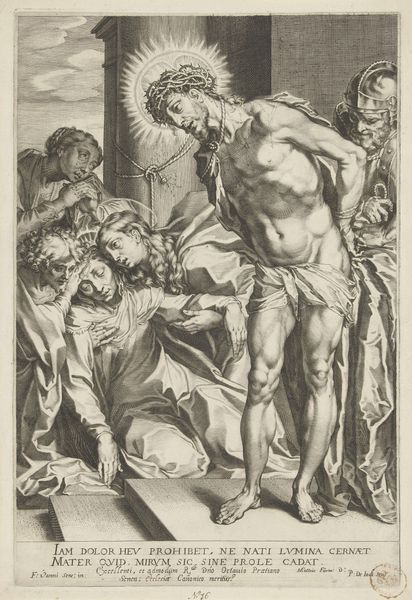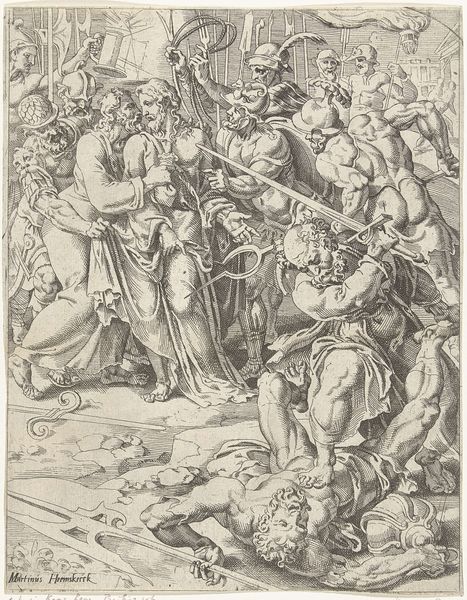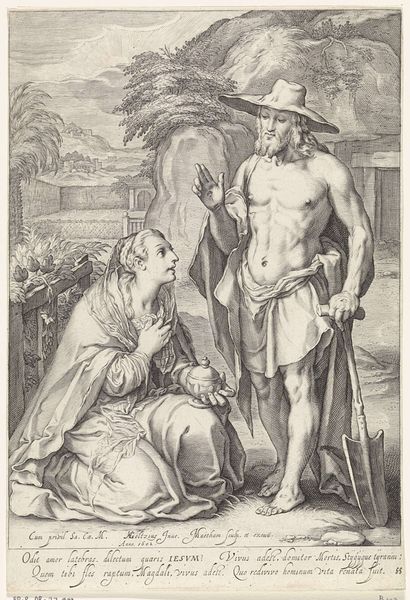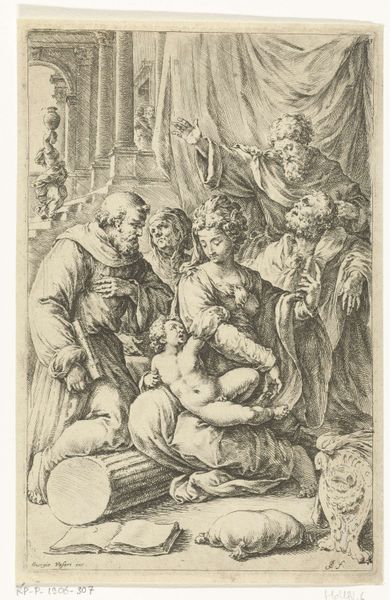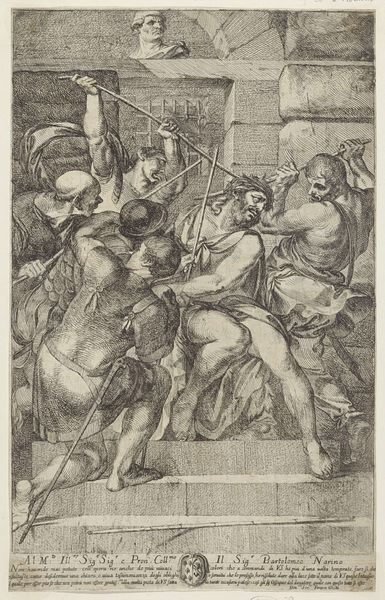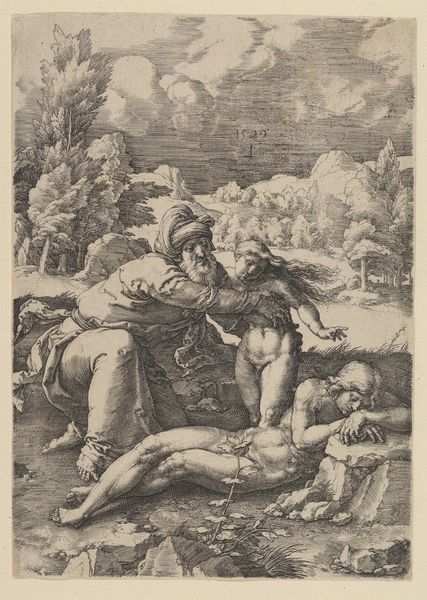
engraving
#
allegory
#
landscape
#
mannerism
#
figuration
#
history-painting
#
italian-renaissance
#
nude
#
engraving
Dimensions: height 118 mm, width 85 mm
Copyright: Rijks Museum: Open Domain
Lambertus Suavius created this print, Pyramus en Thisbe, in the mid-16th century using the intaglio process. This painstaking method involves engraving an image into a metal plate, inking it, and then pressing paper against it to transfer the design. Look closely, and you’ll see the lines that define form and create tonal variation. The artist’s skill is evident in the fineness of the lines, and the control needed to create such detail. Printmaking was crucial for disseminating images widely, operating in a proto-industrial context, and transforming the status of the image. This print, like others of its era, challenges the traditional hierarchy between art and craft. Suavius’s work was made through skilled labor, and was aimed at a broad audience. It shows how technical mastery and artistic expression went hand in hand.
Comments
No comments
Be the first to comment and join the conversation on the ultimate creative platform.

